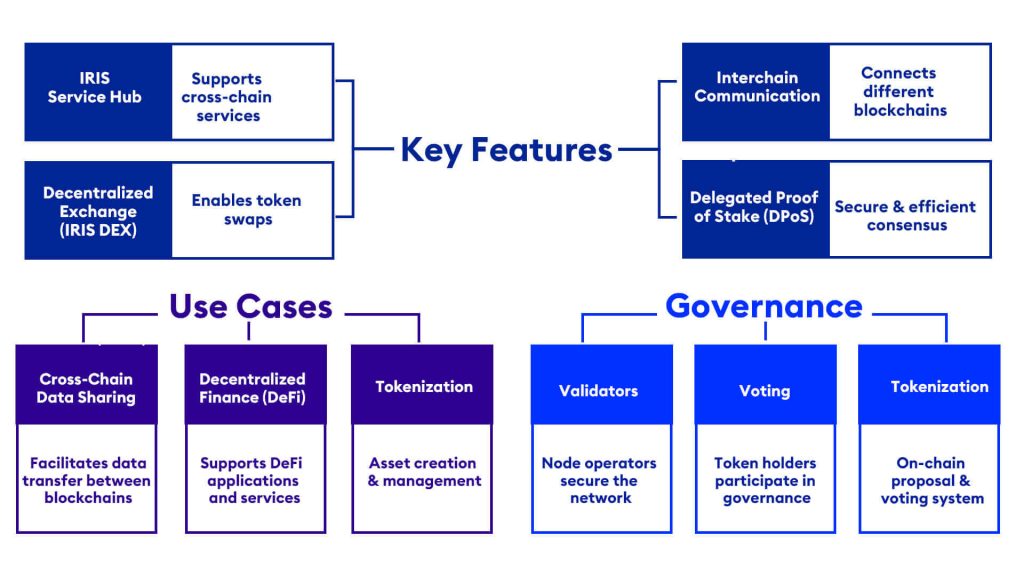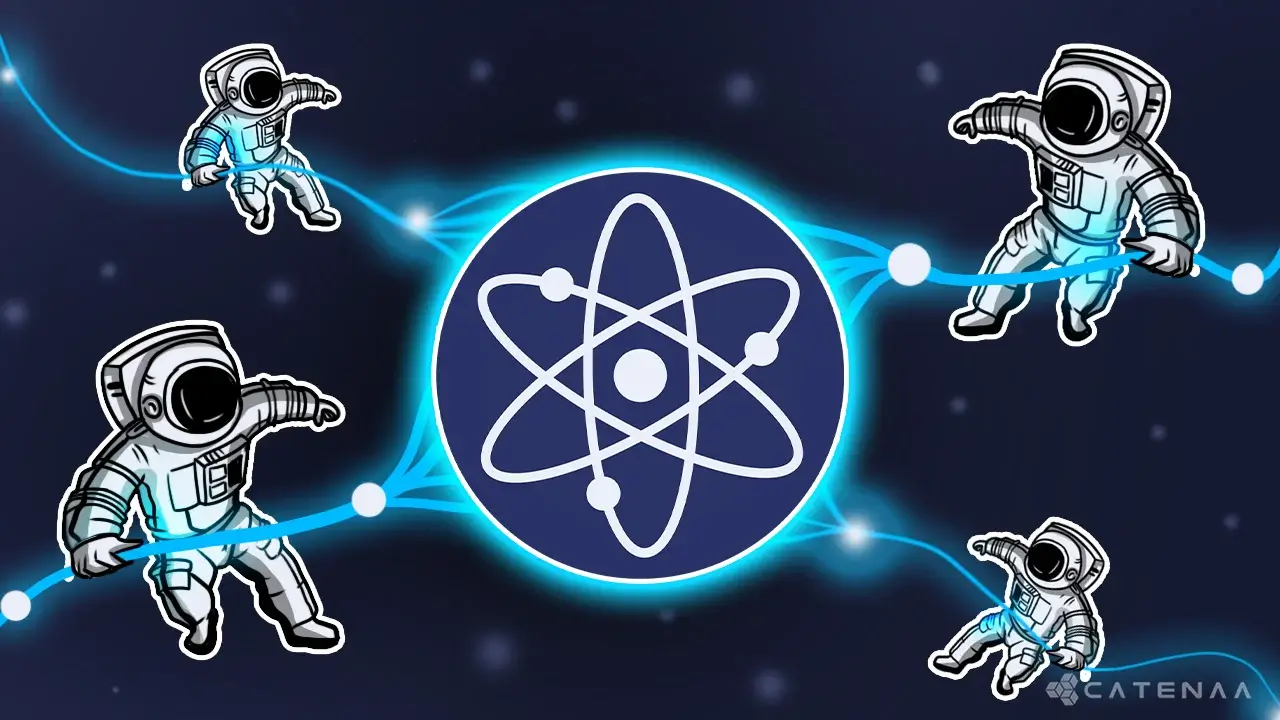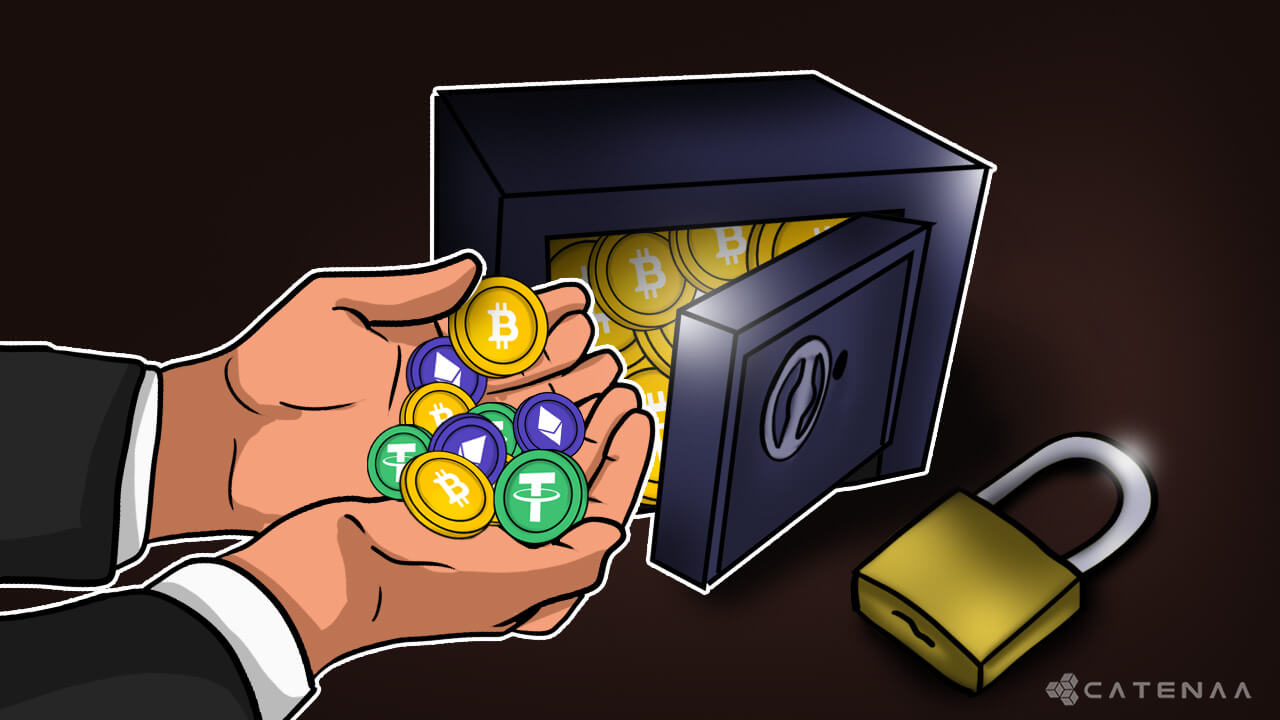Table of Content
What is the Cosmos Hub and How Does it Work?
The Cosmos Hub aims to become the internet for blockchain, which is expected to lead to the widespread use of blockchain technology. It is an open-source project to connect various blockchains to create a faster, interoperable, scalable, and low-fee hub.
The Cosmos Network ecosystem is built utilizing the Tendermint protocol created by Jae Kwon in 2014.
Many applications we use today have become more widespread and accessible due to their interoperability with the emergence of the World Wide Web.
There are a large number of unique Blockchains that consist of unique use cases, yet there is no way of communication or connection between the blockchains other than the highly vulnerable blockchain bridges or ‘atomic swaps’ which encompass another plethora of issues.
The Cosmos Hub could be the solution for this issue with the use of the Inter-Blockchain Communication Protocol.
What Is the Inter-Blockchain Communication Protocol? (IBC)
The IBC is a method of communication that enables secure and decentralized communication and interoperability between independent blockchains. It allows blockchains to exchange assets, data, and information, fostering collaboration and enabling a connected ecosystem of blockchains. This protocol is expected to significantly bring crypto and blockchain technology to the general public.

Cosmos Hub Governance
The governance procedure plays a vital role in most web 3.0 services, and the Cosmos Hub has unique requirements to participate in the governance process.
Cosmos governance is said to be community-based. The Hub’s Governance discussions happen in a number of places moderated by diverse community members, including their Forum, Discord, Twitter, Reddit and anywhere the Cosmos community comes together. 1
Proposing changes or new ideas is a vital part of governance in the Cosmos governance process it is broken down into two processes. They are the On-Chain Proposal Process and the Off-Chain Proposal Process.
Off-Chain Proposal Process
The process of passing a proposal starts way before it is put on-chain. The initial proposal is given time off-chain so that it can receive feedback, new inputs, and other types of edits.
On-Chain Proposal Process
Once the proposal has had time to evolve off-chain, the next step is to put it on-chain. A few governance parameters should be fulfilled in the process of on-chain voting. If you want to learn more about the governance process, the official page can be accessed here.
Benefits of using Cosmos Hub for DeFi and Staking
The Cosmos Hub, a key component in the Cosmos Network offers a wide range of benefits for the DeFi world.

- Interoperability and asset transfer: As mentioned before with the help of the Inter-Blockchain Communication (IBC) protocol the Cosmos Hub facilitates interoperability between blockchains that are zones in the Cosmos Network. This enables DeFi applications and users to access and exchange access assets across multiple Blockchains seamlessly. It opens up a wide array of possibilities for cross-chain liquidity pools, decentralized exchanges, and other DeFi services, enhancing the efficiency and liquidity of the ecosystem.
- Enhanced Security and Reliability: By staking coins in the Cosmos Hub, participants contribute to the security and reliability of the network. The Tendermint consensus algorithm, which powers the Cosmos Hub, ensures Byzantine Fault Tolerance and the finality of transactions. Validators are selected based on their staked coins and are economically incentivized to behave honestly. This consensus mechanism, coupled with decentralized governance, creates a secure and reliable Staking that involves locking up a certain amount of cryptocurrency as collateral to support network operations and participate in consensus. In return for their contributions, stakers receive a portion of the network’s inflationary rewards or transaction fees. Staking rewards in the Cosmos Hub incentivizes token holders to actively participate in securing the network and maintaining its integrity while earning additional tokens as a reward.
- Governance Participation: Staking ATOM in the Cosmos Hub grants token holders the right to participate in the decentralized governance of the network. They can propose and vote on various governance proposals, including protocol upgrades, parameter changes, and funding decisions. This enables token holders to have a say in shaping the direction and development of the ecosystem, ensuring that the network remains responsive to the needs and preferences of its stakeholders.
- Scalability and Performance: With the use of the Tendermint protocol, the Cosmos Hub ensures fast transaction finality and efficient block validation. The Network’s modular architecture further enables scalability by allowing the creation of multiple independent blockchains, each with its own consensus mechanism and specific purpose. This scalability and performance are crucial for DeFi applications that require fast and efficient transaction processing.
- Community and Ecosystem Growth: The Cosmos Network fosters a vibrant and collaborative community of developers, validators, and users. The Cosmos Hub serves as a hub for interchain communication, attracting diverse projects and applications to join the network. This creates a thriving ecosystem where ideas, innovations, and collaborations can flourish, ultimately driving the growth and adoption of DeFi solutions built on the Cosmos Network.
Just like everything in this world, they have their limitations as well. for example, the trade-off for using the secure and scalable Tendermint protocol is the slight centralization of the validation process.
Overall, utilizing the Cosmos Hub will allow participants to unlock the potential of cross-chain DeFi services while actively participating in network security and decision-making processes.
Exploring Some Popular Projects Built on the Cosmos Hub
There can be many concepts that claim to be able to revolutionize the world, yet they seem to be limited to just that, claims or concepts. The Cosmos Hub, however, has some popular projects that give it status beyond a mere concept. Here are two of the many projects built on the Cosmos Hub.
IRISnet (IRIS Hub)
IRISnet and Cosmos have had a long history. IRISnet was built using the Tendermint consensus layer and the Cosmos SDK (named Gaia). Since it is a strategic partner of the Interchain Foundation and the Cosmos Network the IRIS hub has the potential to be the first regional hub outside the Cosmos Hub to facilitate the interoperation of the Cosmos Hub and the independent chains or zones connected to it.2 The IRISnet offers many services, including Coinswap; A Cross-chain AMM (Automated Market Maker) protocol, and a vanguard innovation platform for the Cosmos application ecosystem.

Kava

Kava is a decentralized blockchain that merges the speed and interoperability of Cosmos with the developer power of Ethereum. Kava uses the Cosmos SDK to enhance its interoperability and connect to the Cosmos ecosystem using the IBC protocol. The Tendermint consensus allows Kava to be highly scalable and support high volumes of transactions.3
With every passing day, many people are exposed to the benefits and potential of Web 3.0. It is clear that interoperability between chains is vital for the widespread adoption of Web 3.0 services and that the Cosmos hub provides a gateway into interoperability.
On June 23, 2023, Tether announced that it had chosen the Kava as a gateway for Cosmos USDt. This move aims to bring accessibility and financial stability to the Cosmos ecosystem’s developers and users. This proves that the future seems bright for the Cosmos network and its Hub. Just like how the Tendermint consensus evolved into a general-purpose blockchain consensus engine that can host arbitrary application states.4 The Cosmos Network and Hub, having completed their v10 upgrade on June 21st, 223, clearly seems to continue evolving and revolutionizing the world.
- Cosmos Hub: https://hub.cosmos.network/main/governance/[↩]
- messari.io: https://messari.io/asset/iris-network/profile[↩]
- kava.io: https://www.kava.io[↩]
- Tendermint: https://docs.tendermint.com/v0.34/introduction/what-is-tendermint.html[↩]


